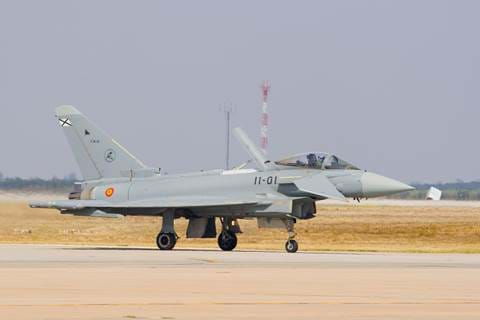The Antenna Menu
An introduction to antennas and their various electrical configurations and shape


If you’ve ever had the pleasure of boarding your plane on a remote stand or being up close and personal with a military jet, you may have often seen a number of antennas on the body of the aircraft. Aircraft antennas can come in many different shapes and sizes however, a lot goes into their form and design to make sure that they are functional, with their shape and placement usually determined by the function of the antenna. This article delves into the most common forms and shapes that antennas can be designed in.
Antennas are used for a variety of purposes such as communication and navigation; here are some of the most common electrical compositions. Once the electrical configuration of the antenna has been chosen to match the application, it then needs to be designed into a suitable form factor for installation onto a platform.
During the design process of a new aircraft, the artist’s impression often leaves out antennas feeling that they are mundane and not ‘design-worthy’. Antennas may not be the prettiest part of an aircraft but are crucial to its communication and navigation ability. One of the most common and established shape an antenna can be designed in is as a blade; this is monopole and is one of Chelton’s most popular antenna. A blade shape is where an antenna is fitted into a ‘shark-fin’ style shape so that when it is installed on an aircraft, there is less drag than a traditional antenna.
Blade antennas appeared in the world of aircraft engineering in the early 20th century mainly as a method of communicating via radios. Avionics manufacturers started to make them on mass and they became the bread and butter of aircraft antenna design due to their good performance and relatively low cost. However, although more aerodynamic than a traditional antenna, the blade shape does impact on drag especially when an aircraft is manoeuvring, which equally has a negative impact on fuel consumption. Whereas other manufacturers may be focusing more on producing the inherent blade antennas at low cost and respectable performance, Chelton’s approach is different. We focus on the continuous improvement of our blade antennas ensuring that they are durable, as low profile as possible, and that the gain is at peak performance.
Chelton’s testing process is vigorous and is where our uniqueness lies; by ensuring the blade antenna is as aerodynamic as possible, Chelton also ensures that the turning efficiency of the platform it will be installed on is not compromised, and that the antenna can withstand the intense side load and strain placed upon it during these manoeuvres; such as the Lockheed Martin F-16 fighter jet which is using Chelton’s 9-33-32 blade antenna. While meeting the environmental performance of the aircraft, Chelton’s testing also ensures the gain performance of the antenna is not compromised.


With a trend for operators requesting smaller antennas to reduce drag, antennas are now being designed to be more conformal; in that they fit seamlessly into the skin of the aircraft, are non-protruding and can arbitrarily take any shape on the surface they are fitted onto, like the full suite of conformal antennas we are developing for the next generation of Korean Fighter Jets. Conformal antennas were originally designed in the 1980s for military aircraft to replace the conventional antenna designs which project from the aircraft’s surface. Although best for tactical missions in military applications, they are also used in some civilian aircraft and land vehicles to save space but also provide a better designed platform.
Conformal antennas are exactly as described, in that they conform to the skin of the aircraft so they are not seen. These are non-invasive and unlike a protruding antenna and are less susceptible to damage during flight or ground movement. Due to the more involved integration into the platform, it is better for conformal antennas to be built into an aircraft during early phases of a design as opposed to retrofitting. To retrofit a conformal antenna and ensure it has enough space to be able to work efficiently without impacting on drag is not for the faint of heart. However, if built in at the design phase, conformal antennas can be integrated seamlessly ensuring that the aircraft is as close to the artist’s impression as possible, as they say ‘if it looks right, it will fly right’.
Conformal antennas also make the aircraft stealthier thanks to a reduced radar cross-sectional area, allowing the platform to remain hidden from radar as a defence tactic. On the other hand, the smaller and more compact shape does mean that there is a negative impact on gain. Chelton’s centre for excellence in antenna design in Marlow, England is able to mitigate this with the use of conformal tuneable antennas which tune and optimise the gain of the antenna within the desired spectrum, whilst maintaining low drag.
You may think that integrated and conformal antennas are one and the same and although integrated antennas are also smoothly added to the skin of an aircraft, it is in fact quite different to conformal antennas. With integrated antennas, the circuits themselves are built into the skin of the platform instead of conforming to its existing shape. Not only does this reduce drag even more than a conformal antenna but it also means that integrated antennas can be built into the platform during the design phase.


Chelton's series of HF (High Frequency) antenna arrays are designed primarily to enable towel rail transmit/receive HF antennas to be installed on fixed and rotary wing aircraft in such a way as to optimise efficiency within the constraints of minimal drag, weight and size.
A range of individual components and masts is available to cater for the widely differing electrical requirements of currently available HF radios, tuners and couplers, and also to provide for the multitude of different mechanical installation problems that can be encountered, particularly on “electrically small” airframes.
As with all airborne HF antennas, the effect of the airframe upon which the antenna is mounted is an essential determinant in the overall efficiency of the system. In general, the greater the conductivity of the aircraft skin in areas adjacent to the HF antenna, the better will be the efficiency.
Whips are the most common type of monopole antenna and are often a ¼ of a wavelength long operating in the HF, VHF and UHF frequency bands. The length of a whip antenna is determined by the wavelength of the radio waves it is used with and its shape takes the form of a straight but flexible wire or rod where the bottom end is connected to either a radio receiver or transmitter. You’re most likely to recognise a whip antenna from a car which uses it to be able to tune to various radio stations operating on different frequencies. These types of antennas are mostly used for portable and fixed applications which require omni-directional communications and are designed to be flexible so that they don’t break easily. The name itself is derived from the whip-like motion the antenna demonstrations when interrupted.
You may remember from years long gone by, when car antennas would often be the most protruding element of the now vintage models. But over the years, engineers and designers have worked tirelessly to lower the height of monopole whip antennas without sacrificing reception by using a coil-shaped inductor. Suitable in challenging conditions and known for their reliable performance, these types of antennas are often found on aircraft and handheld radios for two-way communications and cars and FM radios acting as receivers.


A loop and half loop antenna is a common form of dipole antenna and consists of a coil which carries radio frequency current in the UHF range. Despite what the name suggest, a loop antenna can actually be in any shape e.g. circular, rectangular, triangular, square or hexagonal. A loop antenna’s circumference is close to one wavelength of the frequency it operates at which means it is resonant at that frequency. A resonant antenna has high radiation efficiency and the length is nearly equal to the intended wavelength. A half loop on the other hand, is smaller and less resonant so better used as a receiver rather than a transmitter.
Because loop antennas are compact in size, they benefit from high directivity are so are well-matched for use in RFID devices, MF, HF and shortwave receivers.
Humans have a natural ‘homing signal’ in the brain which helps with finding the sense of direction with the help of audio. Natural direction finding is extremely accurate with a precision of up to one degree (Zhou & Hao, 2011) and this biological system has inspired the feature of direction finding in antennas. Following the development of radio transmitters and receivers, radio direction finding evolved to replicate human audio directional finding for many of the same reasons; the location of possible threats and for spatial awareness.
Direction Finding (DF) is used in several applications such as military for the location of enemy transmitters and direction of threats, and Search and Rescue (SAR) where those in distress do not have a GNSS-based beacon.
A DF system is usually comprised of an antenna, receiver, processing unit and a display and control unit. The shape of a DF antenna is usually determined by the principles in which it operates for example polarization, aperture sampling, Watson-Watt principle and Doppler direction finder to name a few examples. There are also preferred installation characteristics which will define the shape of a DF antenna including; large and uniform ground-plane area, no obstructions and a conductive location.
Chelton’s DF portfolio provides a range of integrated DF solutions for use in SAR, Combat SAR and Civil SAR. Utilizing a Digital Software Processor, the system comprises of an integral synthesised receiver (covering the frequency bands for each type of SAR mission), together with five Guard receivers to monitor pre-defined distress frequencies.

Whether you are looking for a communication, navigation or bespoke antenna, Chelton has a worldwide reputation of quality, capability, reliability and innovative antenna design for over 70 years and will match an antenna solution to customer requirements.
Head to our nifty feature ‘Antenna Finder’ to browse Chelton’s vast range of supersonic, subsonic and land antennas.
Your quote basket is currently empty
 Please select the type of quote you require for this product:
Please select the type of quote you require for this product: